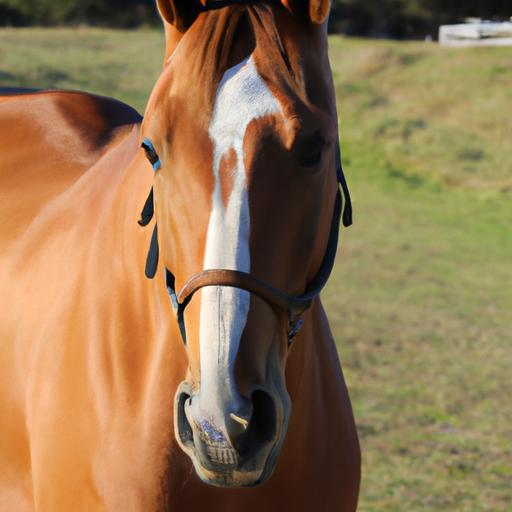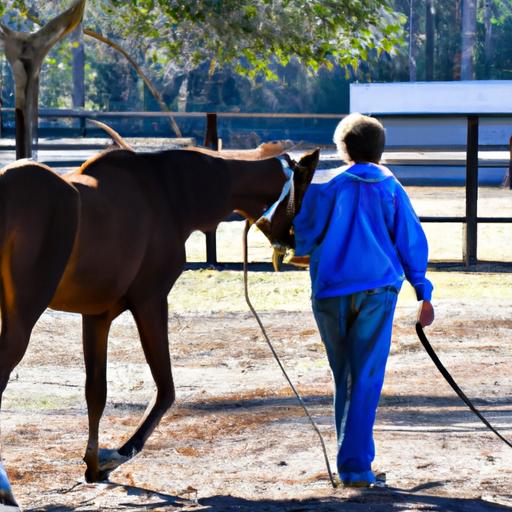Discover the secrets to effective harmony horse training. Overcome challenges, address fear and anxiety, and build a harmonious bond with your equine companion.
Introduction to Harmony Horse Training

When it comes to horse training, there is a method that goes beyond traditional techniques. It’s called Harmony Horse Training, a transformative approach that focuses on building a deep and harmonious bond between horse and trainer. In this article, I will take you on a journey to explore the wonders of this unique training method and its profound impact on both horse and trainer.
What is Harmony Horse Training?
Harmony Horse Training is a philosophy that emphasizes understanding and communication between humans and horses. It goes beyond the mere act of teaching commands and movements; it seeks to establish a profound connection that transcends words. By fostering trust, respect, and mutual understanding, harmony horse training allows for a partnership built on empathy and cooperation.
Importance of Establishing a Harmonious Bond with Horses
Imagine riding a horse that willingly responds to your every cue, effortlessly moving in harmony with your body. This level of connection is only possible when a harmonious bond is established. Horses are incredibly intuitive creatures, capable of sensing our emotions and intentions. By building trust and respect through harmony horse training, we can create a safe and enjoyable environment for both horse and rider.
Benefits of Harmony Horse Training
Harmony horse training offers a multitude of benefits that extend beyond the arena. When we prioritize establishing a harmonious bond with our horses, we unlock a world of possibilities. Improved communication leads to enhanced responsiveness, agility, and overall obedience. Additionally, horses trained in harmony often exhibit reduced anxiety and behavioral issues, resulting in a more enjoyable and fulfilling partnership.
In the upcoming sections, we will delve deeper into the fundamental principles, techniques, and troubleshooting strategies of harmony horse training. Join me as we embark on a journey to master the art of harmonious communication with our equine companions.
Continue to Fundamental Principles of Harmony Horse Training
Fundamental Principles of Harmony Horse Training
Understanding Horse Behavior and Communication
To truly establish harmony with our equine partners, we must first understand their behavior and unique ways of communication. Horses are highly social animals with a complex language of their own. By studying their body language, facial expressions, and vocalizations, we can decipher their needs, emotions, and intentions. Through this understanding, we can better respond to their cues and create a language of harmony that bridges the gap between species.
Building Trust and Respect with Horses
Trust and respect are the cornerstones of any successful relationship, and the same holds true for our bond with horses. Building trust takes time, patience, and consistency. It involves creating a safe and predictable environment for the horse, where they feel secure and understood. Through gentle and respectful handling, we can demonstrate our commitment to their well-being and establish a foundation of trust that enables them to willingly engage in the training process.
Implementing Positive Reinforcement Techniques
Positive reinforcement is a powerful tool in harmony horse training. Unlike traditional training methods that rely on force or punishment, positive reinforcement focuses on rewarding desired behaviors. By using treats, praise, or even a gentle pat, we reinforce the horse’s understanding that their actions have positive consequences. This approach not only motivates horses to learn but also creates a positive association with the training process, enhancing their willingness to participate and cooperate.
In the next section, we will explore how to develop a strong foundation in harmony horse training. We will delve into the essentials of clear communication, basic commands, and creating a calm and relaxed environment that sets the stage for a harmonious partnership.
Continue to Establishing a Strong Foundation in Harmony Horse Training
Establishing a Strong Foundation in Harmony Horse Training
Developing Clear and Consistent Cues
When it comes to harmony horse training, clear and consistent communication is key. Horses are highly perceptive animals, and they rely on our cues to understand what is expected of them. By developing precise and consistent cues, we can effectively convey our intentions to the horse, leading to better understanding and cooperation.
To establish clear cues, start by using distinct and deliberate body language. Use your posture, gestures, and voice in a consistent manner to signal specific commands. Remember, horses are incredibly observant, so be mindful of your own body language and ensure that it aligns with the intended cue.
Teaching Basic Commands and Movements
Building a strong foundation in harmony horse training involves teaching basic commands and movements. Start with simple commands such as “walk,” “trot,” and “halt.” Use positive reinforcement techniques, such as rewards and praise, to reinforce the desired behavior.
As the horse becomes proficient in basic commands, gradually introduce more advanced movements, such as turns, lateral movements, and transitions. Each new skill should be introduced gradually, allowing the horse to understand and master one concept before moving on to the next.
Fostering a Calm and Relaxed Environment
Creating a calm and relaxed environment is crucial for successful harmony horse training. Horses are sensitive creatures, and they can easily pick up on our emotions. When we are tense or stressed, it can negatively impact the horse’s behavior and willingness to cooperate.
To foster a calm environment, it’s important to approach training sessions with a positive and patient mindset. Take the time to establish a routine that includes ample warm-up exercises and relaxation techniques. This will help both you and the horse to enter a state of calmness and focus, setting the stage for a harmonious training session.
By focusing on developing clear cues, teaching basic commands and movements, and fostering a calm and relaxed environment, you are laying the foundation for a successful harmony horse training journey. In the next section, we will explore more advanced techniques that will deepen the connection between you and your equine partner.
Continue to Advanced Techniques in Harmony Horse Training
Advanced Techniques in Harmony Horse Training
Refining Communication Through Body Language
In harmony horse training, communication goes beyond verbal cues. Horses are incredibly perceptive to body language, making it a crucial element in establishing a deeper connection. By refining your body language, you can convey subtle signals that horses readily understand. Pay attention to your posture, gestures, and energy levels. A relaxed and confident demeanor can help convey your intentions clearly, while tension or inconsistency may confuse your equine partner.
Enhancing Responsiveness and Agility
Once you have mastered the basics of harmony horse training, it’s time to take it to the next level. Advanced techniques focus on enhancing your horse’s responsiveness and agility. Through consistent practice, you can refine your cues to become more nuanced and precise. Encourage your horse to respond promptly to your aids, whether it’s a shift in your weight or a slight touch of the rein. By honing these skills, you will create a seamless connection, enabling your horse to execute complex maneuvers with grace and ease.
Introducing Liberty Training for a Deeper Connection
Liberty training is a powerful tool that allows horses to express themselves freely while maintaining a strong bond with their trainers. It involves working with horses without the need for ropes or physical restraints. Instead, communication is established through mutual trust and understanding. Liberty training fosters a deeper connection and empowers horses to make choices, resulting in a more harmonious partnership. This advanced technique requires patience, consistency, and a solid foundation in trust-building exercises.
As you embrace these advanced techniques in harmony horse training, you will witness a remarkable transformation in your relationship with your equine companion. By refining your communication through body language, enhancing responsiveness and agility, and exploring the realm of liberty training, you will forge an unbreakable bond that transcends traditional training methods.
Continue to Troubleshooting Common Challenges in Harmony Horse Training
Tips for Successful Harmony Horse Training
Mastering harmony horse training is a journey that requires patience, dedication, and a genuine love for these magnificent creatures. To help you along this path, here are some valuable tips that will enhance your training experience and strengthen the bond with your horse.
1. Patience and Consistency as Key Factors
Remember that training takes time, and each horse progresses at their own pace. Be patient with your horse and avoid rushing the process. Consistency is crucial in establishing clear communication and reinforcing desired behaviors. Regular training sessions with a consistent routine will yield better results in the long run.
2. Regular Grooming and Care for the Horse’s Well-Being
Grooming is not just about maintaining a horse’s physical appearance; it is also an opportunity to bond and connect with your equine companion. Regular grooming sessions allow you to check for any physical issues, such as soreness or discomfort, and address them promptly. By taking care of your horse’s well-being, you create a foundation of trust and ensure their overall happiness.
3. Seeking Professional Guidance and Support if Needed
Training horses can be challenging, especially when facing complex behavioral issues or specific training goals. Don’t hesitate to seek professional guidance from experienced trainers or equine behavior specialists. Their expertise and insights can provide valuable solutions and help you navigate through any obstacles you encounter along the way.
In conclusion, harmony horse training offers a remarkable journey of connection and understanding between horse and trainer. By embracing the fundamental principles, advanced techniques, and troubleshooting strategies, you can create a harmonious partnership that transcends words. Remember, it’s not just about training horses; it’s about building a bond based on trust, respect, and empathy.
At Horsemasterypro.com, we are dedicated to providing you with the knowledge and support you need to excel in harmony horse training. Join our community of passionate horse enthusiasts and embark on a transformative journey towards a deeper connection with your equine partner.
Continue exploring the wonders of harmony horse training and unlock the true potential of your equine partnership.


